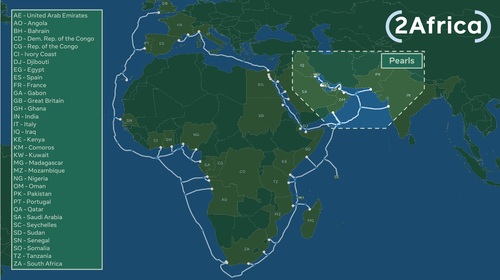Summary of Facebook Connectivity Projects
Facebook Connectivity works with partners to develop these technologies and bring them to people across the world. Since 2013, Facebook Connectivity has accelerated access to a faster internet for more than 300M people around the world. Earlier this week, during an event called Inside the Lab, our engineers shared the latest developments on some of our connectivity technologies, which aim to improve internet capacity across the world by sea, land and air:
- Subsea cables connect continents and are the backbone of the global internet. Our first-ever transatlantic subsea cable system will connect Europe to the U.S. This new cable provides 200X more internet capacity than the transatlantic cables of the 2000s. This investment builds on other recent subsea expansions, including 2Africa PEARLS which will be the longest subsea cable system in the world connecting Africa, Europe and Asia.
- To slash the time and cost required to roll out fiber-optic internet to communities, Facebook developed a robot called Bombyx that moves along power lines, wrapping them with fiber cable. Since we first unveiled Bombyx, it has become lighter, faster and more agile, and we believe it could have a radical effect on the economics of fiber deployment around the world.
- Facebook also developed Terragraph, a wireless technology that delivers internet at fiber speed over the air. This technology has already brought high-speed internet to more than 6,500 homes in Anchorage, Alaska, and deployment has also started in Perth, Australia, one of the most isolated capital cities in the world.
Bombyx wraps fiber around existing telephone wires, clearing obstacles and flipping as it needs to along its route. (Source: Facebook)
Facebook wants to bring high-speed reliable internet to more than 300M people — but the work doesn’t stop there. Connecting the next billion will require many different approaches. And as people look for more immersive experiences in new virtual spaces like the metaverse, we need to increase access to a more reliable and affordable internet for everyone. The company believes this work is fundamental for creating greater equity where everyone can benefit from the economic, education and social benefits of a digitally connected world.
“High speed, reliable Internet access that connects us to people around the world is something that’s lacking for billions of people around the world,” Mike Schroepfer, Facebook’s chief technology officer, declared during the company’s “Inside the Lab” roundtable discussion. “Business as usual will not solve it. We need radical breakthroughs to provide radical improvements – 10x faster speeds, 10x lower costs.”
Facebook and its partners are in the process of building 150,000 kilometers of subsea cables, and working on new sea-based power stations that will provide those cables with power.
“This will have a major impact on underserved regions of the world, notably in Africa, where our work is set to triple the amount of Internet bandwidth reaching the continent,” Dan Rabinovitsj, Facebook’s VP of connectivity, explained. That activity partly ties into a new segment of subsea cables called 2Africa PEARLS that will connect three continents: Africa, Europe and Asia.

(Source: Facebook)
2Africa Pearls, a new segment of subsea cable that connects Africa, Europe and Asia, will bring the total length of the 2Africa cable system to more than 45,000 kilometers, making it the longest subsea cable system ever deployed, the company said.
Cynthia Perret, Facebook’s infrastructure program manager, noted every transatlantic cable Facebook connects will contain 24 fiber pairs. “Capacity alone isn’t enough,” she said, noting that Facebook is also working on ways to configure and adapt the amount of capacity provided to each landing point. Facebook is also utilizing a model called “Atlantis” to help forecast and optimize where subsea cable routes need to be built. An integrated adaptive bandwidth system will likewise allow Facebook to shift capacities based on traffic patterns and reduce congestion and improve reliably, Perret explained.
References:



